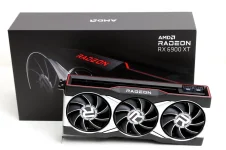ATI Technologies created the Radeon brand back in 2000, marking a huge step forward for computer graphics. Before Radeon came along, ATI made other graphics products, starting with the Wonder series in 1986, followed by the Mach and 3D Rage families. Early products combined 2D and 3D graphics processing, which helped build toward more advanced capabilities later on. The Rage 128 and Rage Pro laid important groundwork for what would become the powerful Radeon line we know today.
Radeon graphics cards went through several major architectural changes over the years. The earliest ones used TeraScale architecture, which powered the R600 series and Northern Islands designs. Later, cards switched to Graphics Core Next (GCN), starting with the Southern Islands series. GCN brought big improvements like unified shaders and better parallel processing abilities. These changes helped Radeon cards handle more complex computing tasks beyond just gaming graphics.
AMD introduced the RDNA architecture with the Navi series, focusing on making cards that used less power but delivered better performance for modern games and applications. According to current information, AMD plans to replace RDNA with UDNA architecture after finishing the Navi 4 series. Each architecture change happened because AMD needed to meet growing performance demands, support newer memory types, and add features needed by gamers and data centers alike.
The business side changed dramatically when AMD bought ATI in 2006, though the Radeon name lived on. The HD 6000 series officially became part of AMD in 2010. Many companies have made Radeon cards over the years, but the market has seen many changes. Some manufacturers, like XFX, adjusted their strategies to meet changing customer needs. Others, like HIS, merged with bigger companies and eventually disappeared as business priorities shifted. Radeon graphics cards have certainly come a long way during their 25-year history.
Radeon graphics cards went through several major architectural changes over the years. The earliest ones used TeraScale architecture, which powered the R600 series and Northern Islands designs. Later, cards switched to Graphics Core Next (GCN), starting with the Southern Islands series. GCN brought big improvements like unified shaders and better parallel processing abilities. These changes helped Radeon cards handle more complex computing tasks beyond just gaming graphics.
AMD introduced the RDNA architecture with the Navi series, focusing on making cards that used less power but delivered better performance for modern games and applications. According to current information, AMD plans to replace RDNA with UDNA architecture after finishing the Navi 4 series. Each architecture change happened because AMD needed to meet growing performance demands, support newer memory types, and add features needed by gamers and data centers alike.
The business side changed dramatically when AMD bought ATI in 2006, though the Radeon name lived on. The HD 6000 series officially became part of AMD in 2010. Many companies have made Radeon cards over the years, but the market has seen many changes. Some manufacturers, like XFX, adjusted their strategies to meet changing customer needs. Others, like HIS, merged with bigger companies and eventually disappeared as business priorities shifted. Radeon graphics cards have certainly come a long way during their 25-year history.












